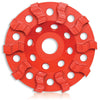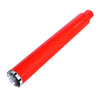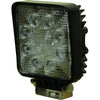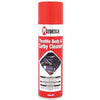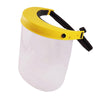In construction or landscaping, the success of your project depends on how well the ground is compacted. Achieving the desired level of compaction ensures the stability and longevity of your work. But the key to maximising efficiency and effectiveness lies in selecting the appropriate compaction equipment for the task at hand.
When choosing between plate compactors and roller compactors, it is important to understand their capabilities to make the right decision for your project. In this guide, we'll unravel the differences to help you navigate the world of compaction equipment with confidence.
The Impact of Compaction Equipment Selection:
Choosing between a plate compactor and a roller compactor can make a significant difference in your project’s outcome. Whilst both are designed to compact soil, gravel, or asphalt, their operational use and effectiveness vary depending on the scale and scope of the work.
Whether you're aligning paving stones in a garden or preparing the sub-base for a new road, understanding these distinctions is vital for successful compaction and project completion.
Understanding Plate Compactors:
Plate compactors are renowned for their versatility and precision in smaller, confined spaces. They operate by exerting a vibratory force that compacts material from the top down, creating a solid and even base.
How plate compactors work:
Plate compactors consist of a heavy steel plate fitted to the base of the machine, which vibrates rapidly to exert downward force on the surface being compacted.
Pros and Cons of plate compactors:
Advantages include manoeuvrability in tight spaces, ease of operation, and effectiveness in compacting sand, gravel, and mixed soils. Disadvantages might involve the depth limitations of compaction and challenges in compacting cohesive soils like clay.
Ideal scenarios for using plate compactors:
Plate compactors excel in compacting the sub-base for driveways, sidewalks, patios, and in the trenches where space might be restricted.
Unveiling Roller Compactors:
Conversely, roller compactors are the heavyweight champions of larger-scale projects. They use large, cylindrical rollers to compress surfaces evenly and are particularly effective on larger and more open spaces.
Roller compactors typically feature one or more large drums that rotate, rolling over the material to provide compression and smooth finishing.
Pros and cons of roller compactors:
The advantages of roller compactors include their ability to compact larger areas quickly and efficiently, as well as their suitability for asphalt compaction. The disadvantages could be their size, making them less suitable for small, enclosed spaces, and the higher cost compared to plate compactors.
Situations where roller compactors excel:
Roller compactors are ideal for road construction, large parking lots, and other extensive areas where uniform compaction is required over a broad surface.
Plate vs. roller compactors:
When comparing plate and roller compactors, several key factors emerge:
Direct comparison between plate and roller compactors:
Plate compactors are better for small to medium jobs and detailed work, whereas roller compactors are suited for large-scale projects and smooth finishes.
Factors to consider when choosing between the two:
Consider the size of the project, the type of material to be compacted, the desired depth of compaction, and the project's budget.
The decision between plate compactors and roller compactors hinges on multiple factors, including the project's scale and the material's characteristics. By evaluating each compactor's capabilities against your project's specific demands, you can ensure a solid foundation for your construction or landscaping endeavour.
Tradesmart is here to guide you through the selection process with our extensive range of compaction equipment. Contact us today to discover the perfect match for your project.


































